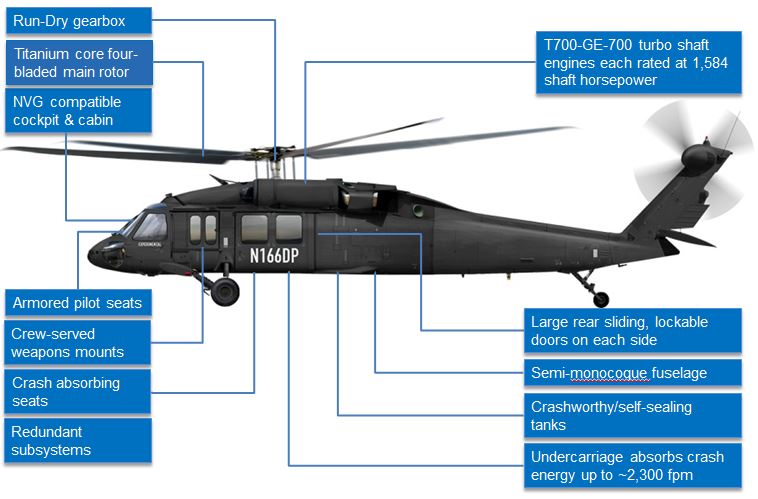Navigating Uh 60 Helicopter Rules and Conformity Demands

Regulatory Structure Summary
The regulative structure regulating UH-60 helicopter procedures encompasses a complex collection of standards and rules established by air travel authorities. These policies are created to make certain the efficient and risk-free procedure of UH-60 helicopters in different environments. The Federal Air Travel Management (FAA) plays a main role in developing and applying these policies, which cover a large range of operational aspects, including airworthiness criteria, pilot credentials, upkeep demands, and functional procedures.
Compliance with these policies is necessary for helicopter drivers to keep the greatest degrees of safety and functional honesty. Failure to follow these regulations can result in severe effects, including accidents, injuries, and regulative permissions. As a result, helicopter drivers should stay notified about the most up to date governing developments and make certain that their operations remain in full conformity with all relevant policies and criteria.
Airworthiness Inspections and directives
Among the regulatory framework controling UH-60 helicopter operations, a vital focus lies on conformity with Airworthiness Directives and performing extensive evaluations to support safety and security standards and functional dependability. Airworthiness Directives (ADs) are released by aviation authorities to deal with risky problems in aircraft, consisting of the UH-60 helicopter, and mandate certain activities to be taken by owners or drivers. Compliance with Advertisements is necessary, and failure to stick to these instructions can result in major repercussions, including grounding of the airplane.
Normal assessments are critical to making sure the airworthiness of UH-60 helicopters. By sticking to a strict evaluation routine, operators can identify and attend to prospective problems promptly, thus improving the safety and integrity of UH-60 helicopter operations.
Pilot Qualifications and Training

Pilot training for UH-60 helicopters is comprehensive and covers a vast array of subjects, consisting of aircraft systems, emergency situation procedures, navigation, and mission-specific training. Additionally, pilots go through simulator training to exercise different emergency situation scenarios in a controlled environment. This training helps pilots establish the necessary skills to take care of difficult scenarios efficiently.


Furthermore, ongoing training and specialist advancement are essential for UH-60 pilots to remain present with the most recent laws, innovation, and finest practices. By purchasing pilot credentials and training, operators can enhance safety, maximize performance, and guarantee conformity with governing requirements in the operation of UH-60 helicopters.
Operational Limitations and Needs
Pilot certifications and training work as the structure for understanding the operational constraints and needs associated with UH-60 helicopter operations (uh 60). These functional restrictions are implemented to make certain the safety of the crew, passengers, and the airplane try this out itself. Operational restrictions may consist of variables such as weather condition problems, weight limitations, altitude restraints, and operational borders. It is essential for pilots to be skilled in these restrictions to make informed decisions throughout flight operations. Furthermore, compliance requirements, such as adhering to certain trip paths, interaction methods, and emergency procedures, are crucial for preserving operational safety and security and regulative compliance. Pilots need to remain present with all functional constraints and needs through regular training, briefings, and reviews to reduce threats and guarantee reliable and risk-free UH-60 helicopter procedures. By focusing on adherence to these functional standards, pilots can enhance the general safety and efficiency of their goals while upholding regulatory criteria.
Emergency Treatments and Conformity Testing
Efficient emergency situation treatments and comprehensive compliance screening are vital parts of keeping functional safety and governing adherence in UH-60 helicopter operations. Emergency procedures encompass procedures for various about his situations, including engine failures, fires, hydraulic issues, and extra. Pilots and staff participants have to be fluent in these treatments to react swiftly and effectively in emergency situations. Regular conformity testing ensures that the helicopter satisfies all regulatory needs established forth by aviation authorities. This screening includes comprehensive evaluations, checks, and analyses to confirm that the airplane is airworthy and in conformity with all applicable laws.
In addition, compliance testing may involve simulations of emergency situations to evaluate the staff's action and the helicopter's performance under tension. By focusing on emergency treatments and compliance screening, UH-60 operators can reduce risks and demonstrate their dedication to security and regulatory conformity.
Verdict
To conclude, adherence to governing framework, compliance with airworthiness instructions, pilot certifications and training, functional limitations, and emergency procedures are essential for navigating the policies and demands of running a UH-60 helicopter. uh 60. It is essential for operators to focus on security and make certain complete compliance with all appropriate policies to keep the airworthiness and operational stability of the airplane
Navigating the regulatory landscape surrounding UH-60 helicopter procedures demands a nuanced understanding of the intricate internet of policies and compliance demands.Compliance with these Check Out Your URL laws is necessary for helicopter drivers to maintain the highest levels of security and operational integrity.In the middle of the regulatory framework regulating UH-60 helicopter procedures, a crucial focus exists on compliance with Airworthiness Directives and carrying out comprehensive evaluations to maintain safety standards and functional dependability.Effective emergency situation procedures and comprehensive compliance screening are vital parts of maintaining functional safety and security and regulative adherence in UH-60 helicopter procedures. Normal compliance screening makes sure that the helicopter satisfies all governing needs set forth by aeronautics authorities.